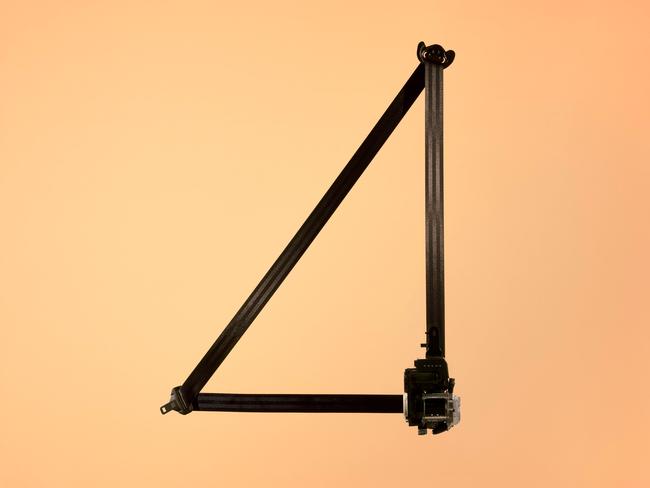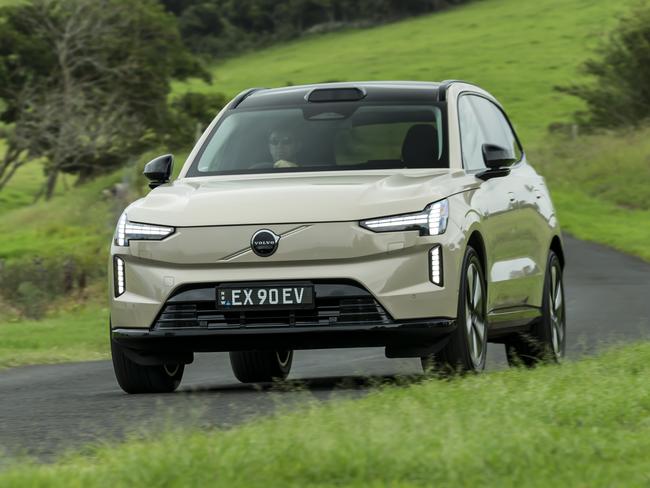‘Zero deaths’: new tech to change cars forever
Cars as we know them are set to change forever, via one of the biggest changes to vehicle safety in 66 years amid a move to ‘no collisions’.
On the Road
Don't miss out on the headlines from On the Road. Followed categories will be added to My News.
Some 66 years and a more than million lives saved since engineer Volvo’s Nils Bohlin invented the three-point safety belt, the Swedish brand has once again reinvented the humble seat belt with an adaptive restraint system that adjusts to your body shape to lower risk of injury.
Primed to be introduced on next-year’s mid-size all-electric Volvo EX60 SUV, the next-gen multi-adaptive belt was developed following real-world accidents saw a higher risk of injury for those unfortunates among us not built like mister or misses average.
Painstakingly analysing data from over 80,000 people involved in real-life accidents globally over the last five decades, Volvo found that tall occupants were particularly exposed to head injuries, while smaller drivers and passengers were prone to painful fractured ribs.
MORE: Trump declares war on ‘world’s worst car feature’
A rethink was needed, that prompted Volvo engineers to introduce an advanced adaptive safety belt.
This belt tailors its responses to those onboard to minimise injury following an impact and the clever pioneering tech works even before you’ve placed your bum on seat.
SNEAKY SAFETY
Sneakily using a combination of interior and exterior sensors, the Volvo accurately sizes you up by measuring your height, weight, body shape and then takes account of your seating position and posture.
While modern safety belts already use load limiters to control forces applied on the human body, the new tech broadens the profile of responses from three- to a Spinal Tap-sounding 11, matching each setting to the individual on board.
MORE: Tesla’s huge Aus shift as Musk-Trump rift deepens


The belts are now so clever that they even act differently depending on the direction or speed of the vehicle.
The result is a restraint system that dishes out higher belt loads for larger occupants that reduces the chance of a head injury, while lighter passengers receive lower belt loads to slash the risk of painful cracked ribs.
It’s not just weight or height Volvo boffins have catered to.
A broad spectrum of load-limiting profiles for whatever shape you are, even includes the heavily pregnant and (thanks to nifty over-the-air software updates) the tech will only get more sophisticated as it matures.
MORE: The Yank tank cutting Australia in two

Forever at the forefront of safety, the beauty of the original three-point safety belt was not just how effective it was in the Volvo Amazon sedan back in 1959 but how the Swede firm effectively gave the patent away for free, with neither its inventor nor carmaker earning a cent from its use in other brands.
DEMOCRATISATION OF SAFETY
Further innovations over the years that have democratised safety include the rear-facing child seat (1972), that mimicked how astronauts were positioned for takeoff, the booster cushion (1978) that literally boosted comfort and safety for seat-belt-wearing kids and advanced driver assist tech that includes blind-spot detection (2003) and an early collision avoiding form of autonomous emergency braking that dates back to 2008.
MORE: iPhone car coming to Australia

Volvo declared that it remains committed to its goal that by 2030 it aims to prevent any fatal or serious injury in its cars, with the ultimate aim of no collision in any of its vehicles.
While the world’s first mandatory seat belt laws were introduced back in 1970 in Victoria, the rest of the world was much slower to recognise the benefits of the lifesaving tech.
In the United States, even up until the mid-1980s, seat belt laws triggered protests over claims they violated civil rights.
Today, only the small state of New Hampshire does not require occupants to wear seat belts while driving a vehicle.
Originally published as ‘Zero deaths’: new tech to change cars forever




